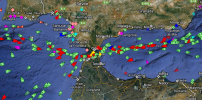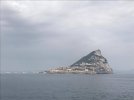Old Navy BGO
10-Year Member
- Joined
- Jan 5, 2012
- Messages
- 4,613
There is no feeling like sailing offshore on a moonlight night...
I did a sailing cruise my third class summer. Back then it was 2-3 weeks on gray ship in Charleston, then 2-3 weeks sailing. We were supposed to sail from Charleston to Bahamas and Fort Lauderdale, but hurricane (and pretty rough seas) offshore caused us to cancel Bahamas and motor down the intercoastal waterway from Mayport to Ft Lauderdale. We got a week in Ft Lauderdale (tough, but someone has to do it), then sailed Ft Lauderdale direct to USNA ... essentially riding the Gulf Stream. It was amazing, and frankly no better way to learn seamanship, navigation, maintenance, and small team leadership.
I did a sailing cruise my third class summer. Back then it was 2-3 weeks on gray ship in Charleston, then 2-3 weeks sailing. We were supposed to sail from Charleston to Bahamas and Fort Lauderdale, but hurricane (and pretty rough seas) offshore caused us to cancel Bahamas and motor down the intercoastal waterway from Mayport to Ft Lauderdale. We got a week in Ft Lauderdale (tough, but someone has to do it), then sailed Ft Lauderdale direct to USNA ... essentially riding the Gulf Stream. It was amazing, and frankly no better way to learn seamanship, navigation, maintenance, and small team leadership.


